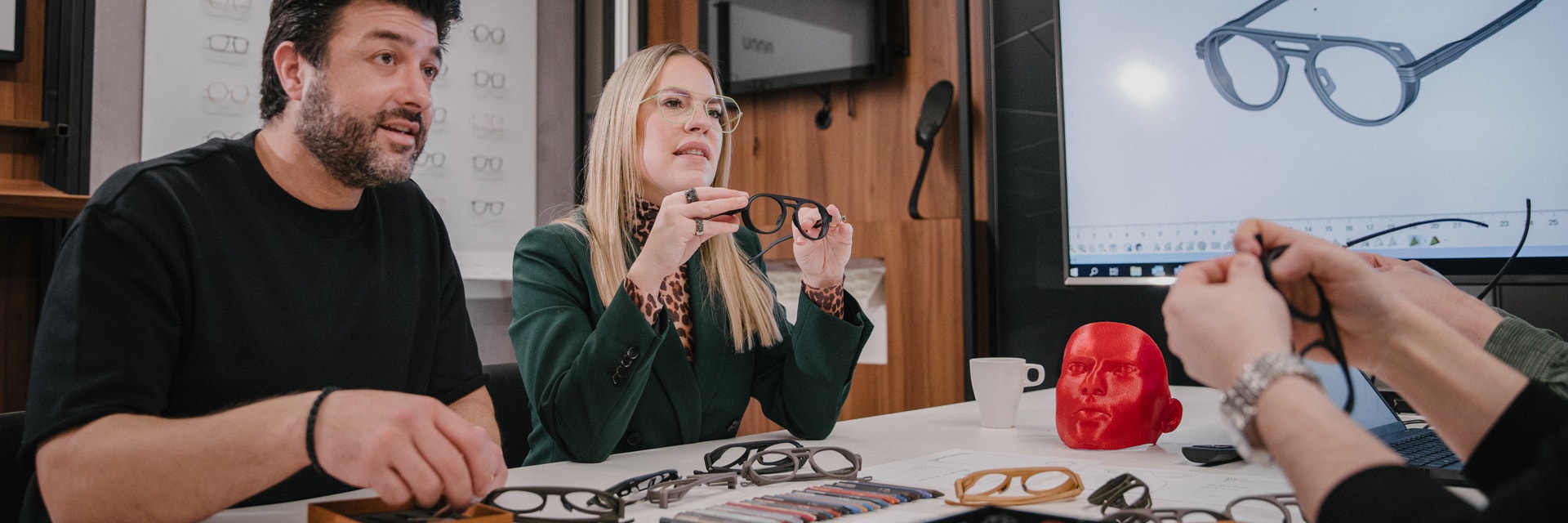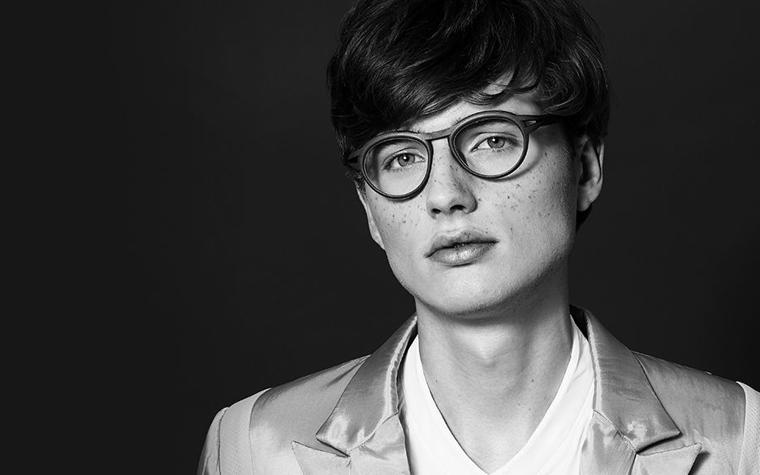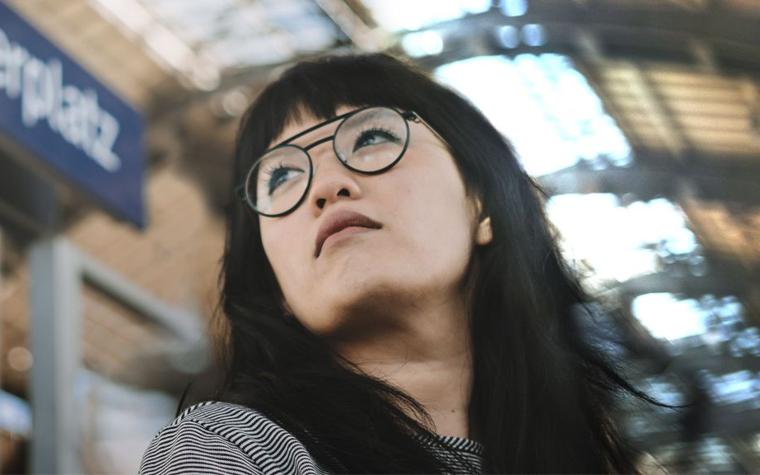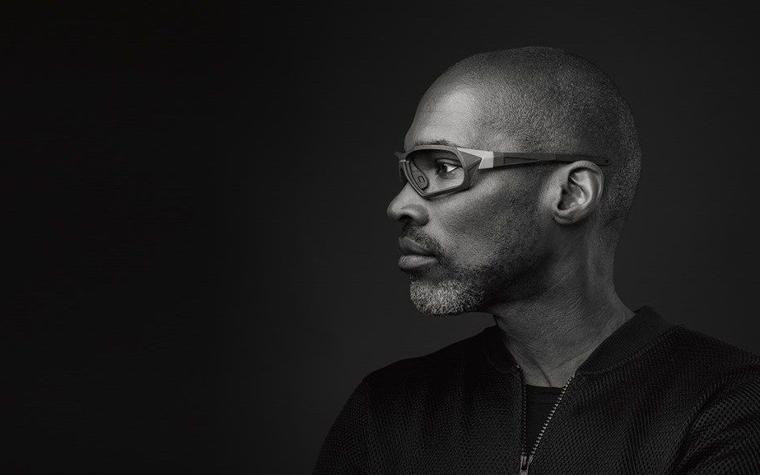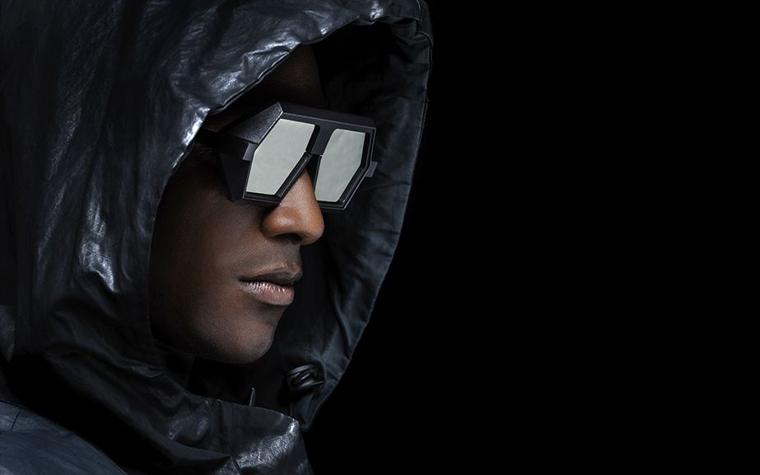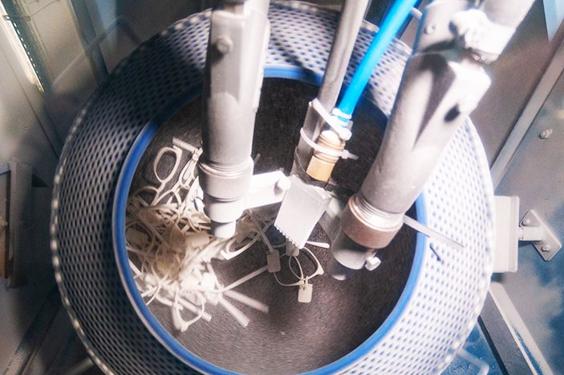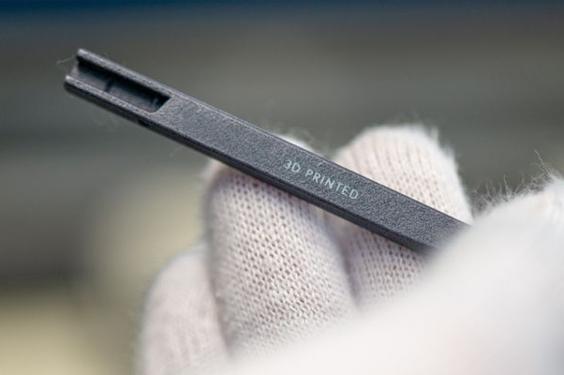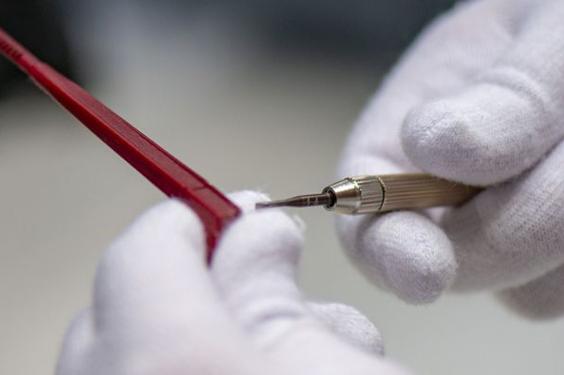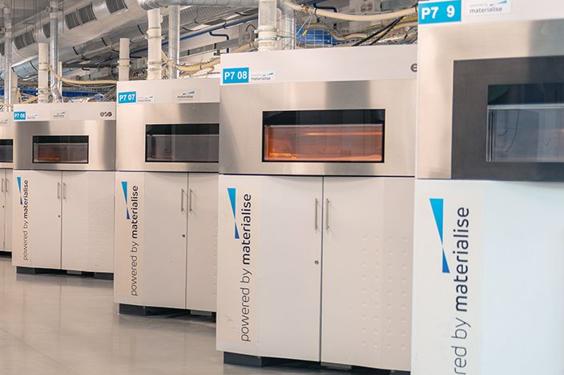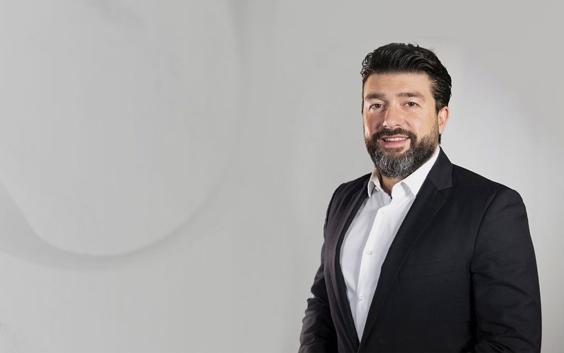
INTERVIEW
3DP&Me: “Sustainability is the single biggest item on the agenda for manufacturers right now.”
An interview with wearables expert, Materialise’s Alireza Parandian
Welcome, Alireza. You lead Materialise’s partnerships with the eyewear industry and work closely with a number of diverse brands – what are the key market developments you and your clients are witnessing?
Growth. The eyewear industry – in terms of both frames and lenses – is growing at a rapid pace. A number of factors are driving that. Demographics for one. Globally we have an aging population, traditionally a major segment of the market. As well as meeting the needs of those customers now in terms of corrective eyewear, this has also sparked a real push around preventative technologies, new types of filters etc. Coupled with the impact that unprecedented ‘screen time’ is having on eyesight, it isn’t hard to see, pardon the pun, why a boom is taking place.
At the other end of the scale, millennials are also making their presence felt, especially in the US. They demand fast, affordable fashion and that applies to eyewear choices. Sustainable fast, affordable fashion, to be precise.
So sustainability is a key topic right now?
It is. And it has broad implications – especially in terms of where 3D printing can make a difference.
Consumers, younger generations in particular, are becoming more and more conscious of the environmental impact of their purchasing. They want to know that the materials and processes used to create the products they buy are not creating unnecessary waste, harm, etc. How eyewear is produced is becoming as important as the end-product itself. Meanwhile, sustainability is also the single biggest item on the agenda for manufacturers right now and not simply as a knee-jerk reaction to evolving consumer attitudes. Stock wastage has historically been a huge issue for the eyewear industry. An unavoidable risk created by a problematic misalignment; on the one hand, you have rigid development cycles, fixed production lead times and the (happy) burden of volume, on the other, you have a customer base with rapidly evolving tastes and needs. The two don’t marry up. What’s needed is a way to correct the mismatch.
The dream scenario is to be able to offer new eyewear designs, in multiple materials, that can be produced at a speed and quantity that matches demand, while simultaneously reducing wastage and revenue-threatening stock risk. This dream is now materializing quickly as the developments in the field of 3D printing are advancing at a rapid pace.
So how important is the development of new materials in terms of making this future a reality?
Critical. There are so many plus points for 3DP in terms of the benefits it offers the eyewear industry now. Its additive nature, the processes already creating production efficiencies, the creativity it allows through design freedom. But all this is still not enough.
If you can’t show a clear path forward beyond the here and now, adoption stalls. We know this. We’ve seen it in other industries. In eyewear, the aesthetic demands, performance requirements and consumer expectations I’ve already mentioned make it essential that we – the 3DP industry – can offer professionals a wider range of materials to work with.
From Materialise’s perspective, this is a need we spotted early on. It’s one of the key reasons we’ve partnered with BASF as part of our R&D strategy, and why we have invested so heavily in this area.
It’s also why we are striving to develop new 3DP technologies – from software to processes and even materials – that are eyewear specific. Application-led, not 3DP-led. We need to co-evolve with the eyewear ecosystem and use as much feedback as the industry can offer to make this ambition a reality. It’s why we are so passionate about working with a diverse range of customers in the industry.
“Personalization will unlock purchasing potential – that is an exciting prospect for eyewear professionals.”
— Alireza Parandian, Head of Global Business Strategy – Wearables
Earlier you also mentioned digital transformation – did you mean in terms of production or purchasing?
Both. From a production point of view we are certainly working more and more with the eyewear industry to develop digital supply chains which automate ordering, printing and delivery of eyewear ranges. But what’s incredibly exciting right now in eyewear is the coming together of digital and physical from a customer experience perspective.
Developing a strong online offering is a priority for most retailers at the moment – it’s what consumers want. This isn’t just about making sure the latest frames are browsable online, it’s increasingly about pushing traditional ‘physical’ experiences into the digital world to kick start engagement sooner. For instance, virtual and/or augmented reality developments mean I no longer have to set foot in a store to take that first critical step of seeing how a specific frame type suits my individual features. At home on my laptop or phone I’m already engaged and statistically proven to be much more likely to buy.
The question is, how do you link that experience to in-store visits? How do you convert? The answer lies in keeping that personal experience going.
What is your vision for how this ‘personal’ retail experience will evolve?
People want personalized products. For eyewear, that means frames the way I want them to look, fit to my individual specifications, and with optics perfectly matched to my needs. It’s in retailers’ best interests to meet these demands. In fact, it’s been shown that billions of dollars are lost every year because of potential customers being dissatisfied with poor fit.
You can’t get all these things from a purely digital offering. You can’t get them from a traditional shop experience. You can get it from a combination of both. Optical experts empowered by technology.
Facial scanning software, together with the growing variety of 3D printing techniques and new materials available (now and in the future), means that eyewear professionals have the tools at their disposal to deliver a unique customer experience, product, and service; one which seamlessly flows from online to in-store, on a mass-market level.
Personalization will unlock purchasing potential – that is an exciting prospect for eyewear professionals.
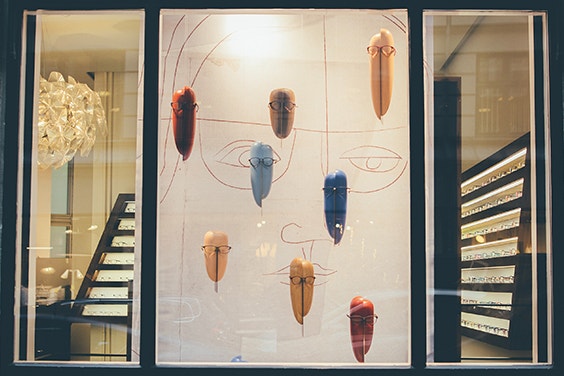

But with advances in smart consumer tech, isn’t there a risk that stores and optical specialists might become obsolete? Won’t people just be able to submit their data online one day and receive their tailored eyewear the next?
No, I really don’t think so. You see, the other thing to remember is that people like to have choices, they don’t like to make choices.
They will always need specialists to guide them through the options. In this sense, developments in online, digitization and consumer tech are not a threat, they are an immense opportunity. One that is only going to get bigger.
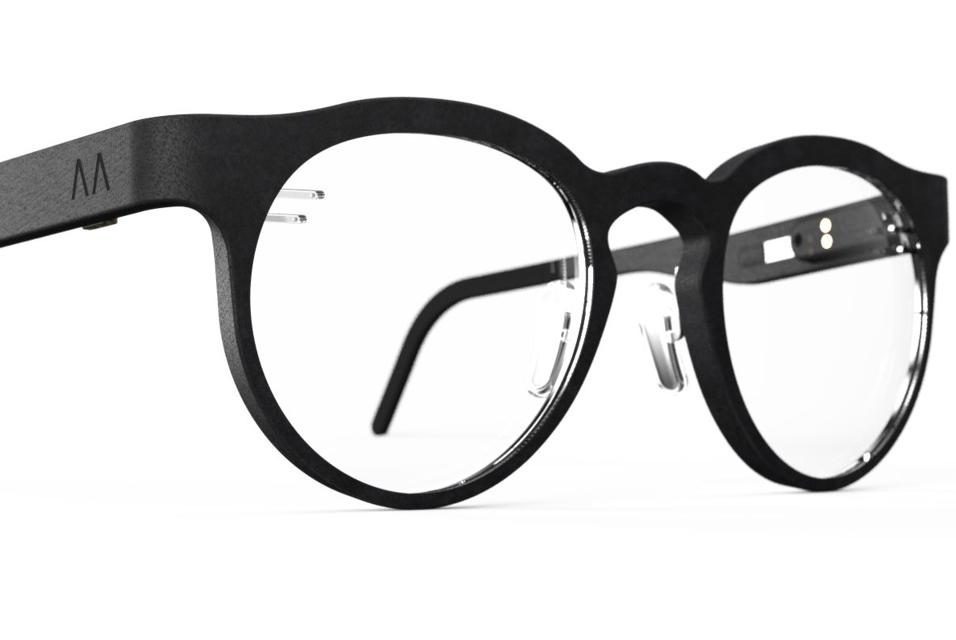

Still on the subject of smart technology, where do you see the concept of smart eyewear heading?
We expect a slow, but very definite, revolution in smart consumer eyewear – an application 3DP is ideally suited to in terms of developing the shapes and structures needed to perfectly house electronics.
The capability to connect face, wrist, and phone is coming. Imagine a future where instead of having to keep checking your fitness tracker during a run, you simply receive continuous feedback in front of your eyes. In fact, wellbeing will be one of the biggest drivers behind what we think will be a hockey stick growth curve, and not just in the fitness world.
Advances in smart lens technology in particular, have huge implications for eye health. One company we are working with – Morrow Optics – has recently developed smart varifocals that mimic normal adaptive eyesight. I believe a recent interview in this series is actually with the company’s co-founder and CEO, Paul Marchal. With innovators like this, and the opportunities opened up by taking the different approach to eyewear I’ve been talking about, we could certainly see a future where corrective adjustments can simply be uploaded at the click of a button.
The further miniaturization of electronics will also be key, of course. But this is a matter of when, not if. It’s exciting. And also an incentive for us, the 3D printing industry, to keep pushing this revolution forward, particularly in terms of material development. Change is inevitable yet it also takes work. We are putting that work in now to really make a new future feasible for a new era in eyewear.
Share on:
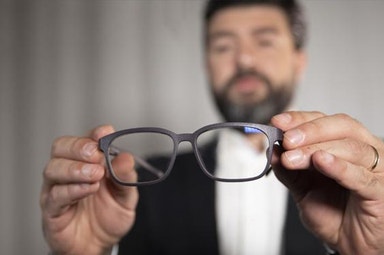
Biography
Alireza Parandian
You might also like
Never miss a story like this. Get curated content delivered straight to your inbox.
